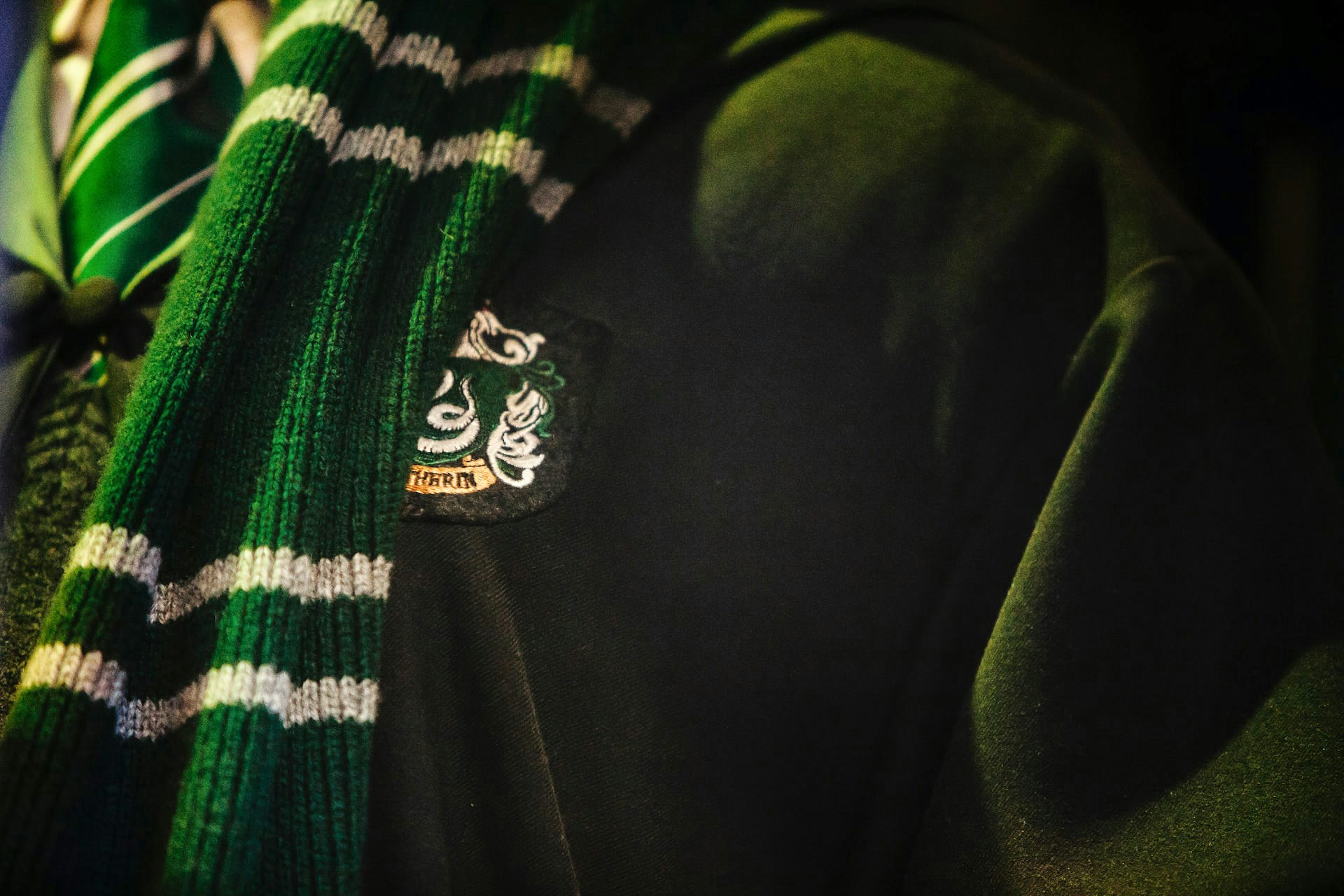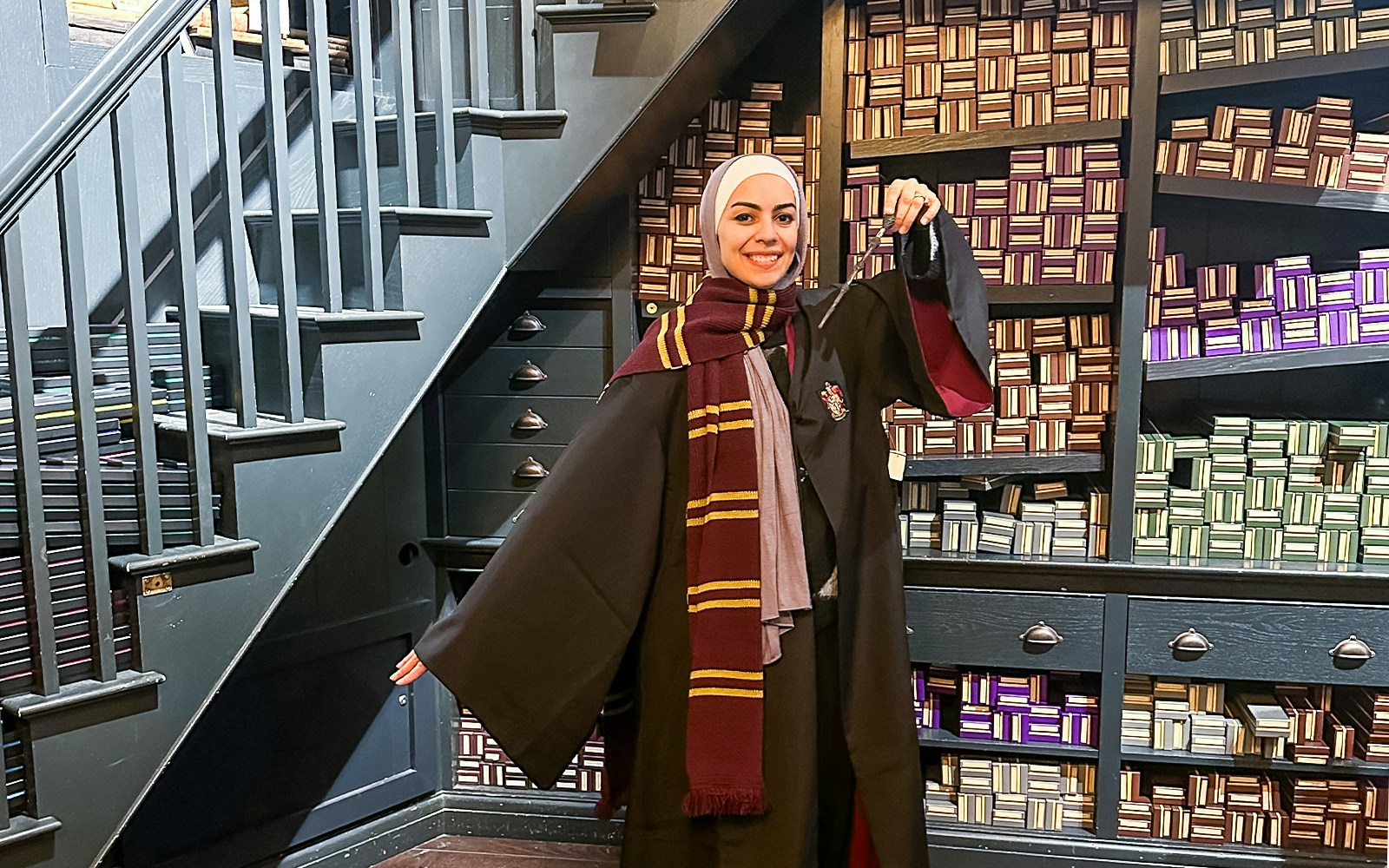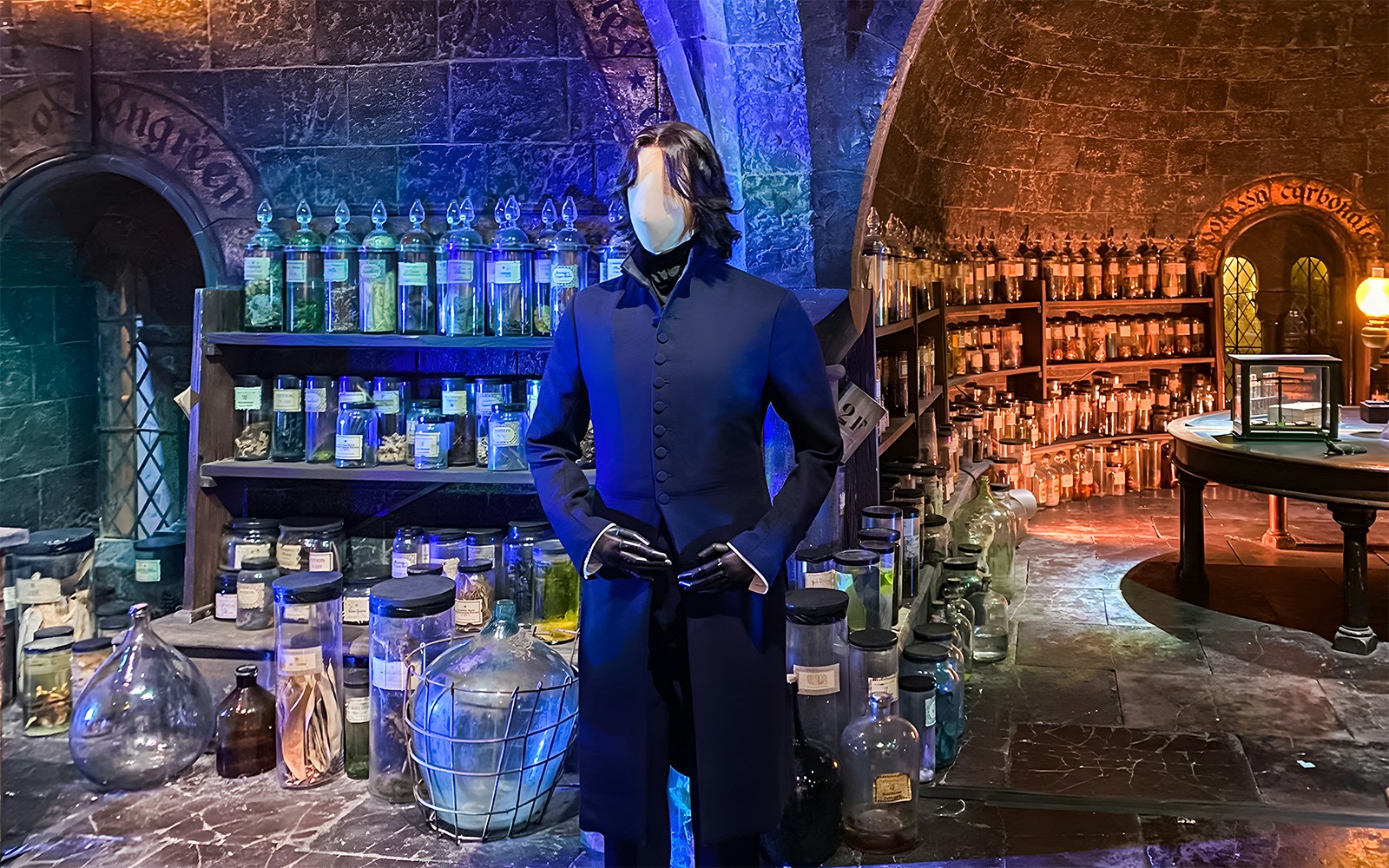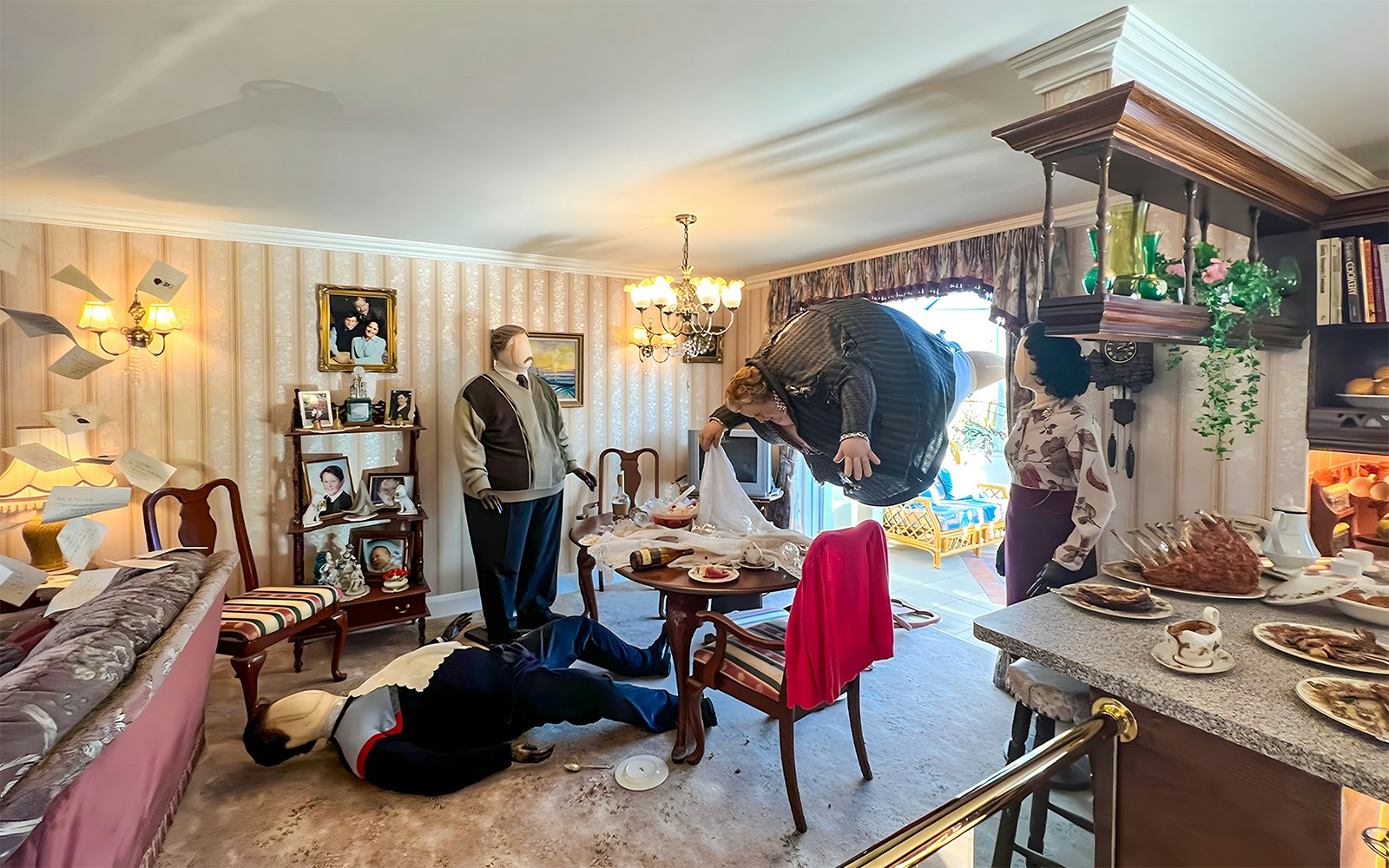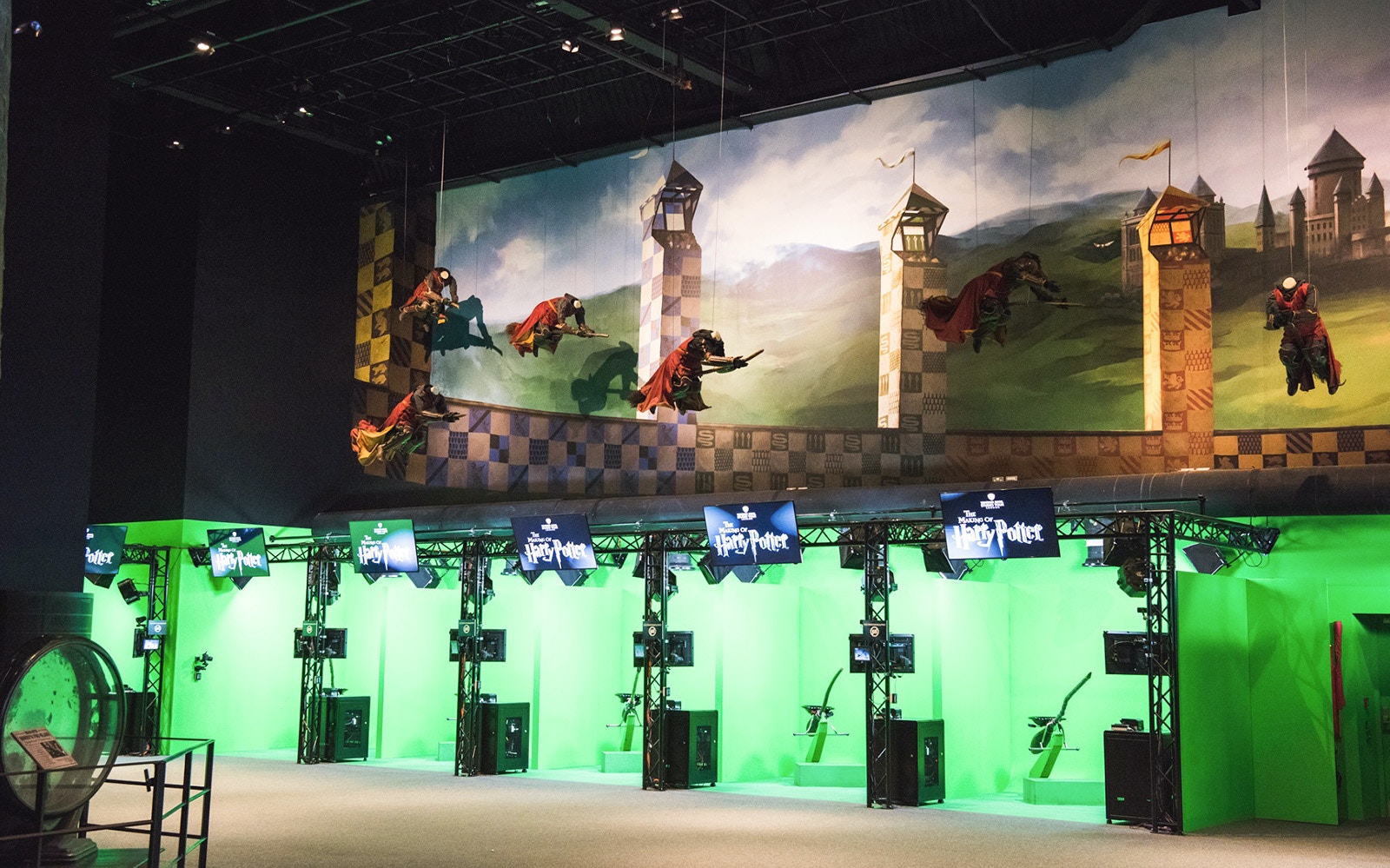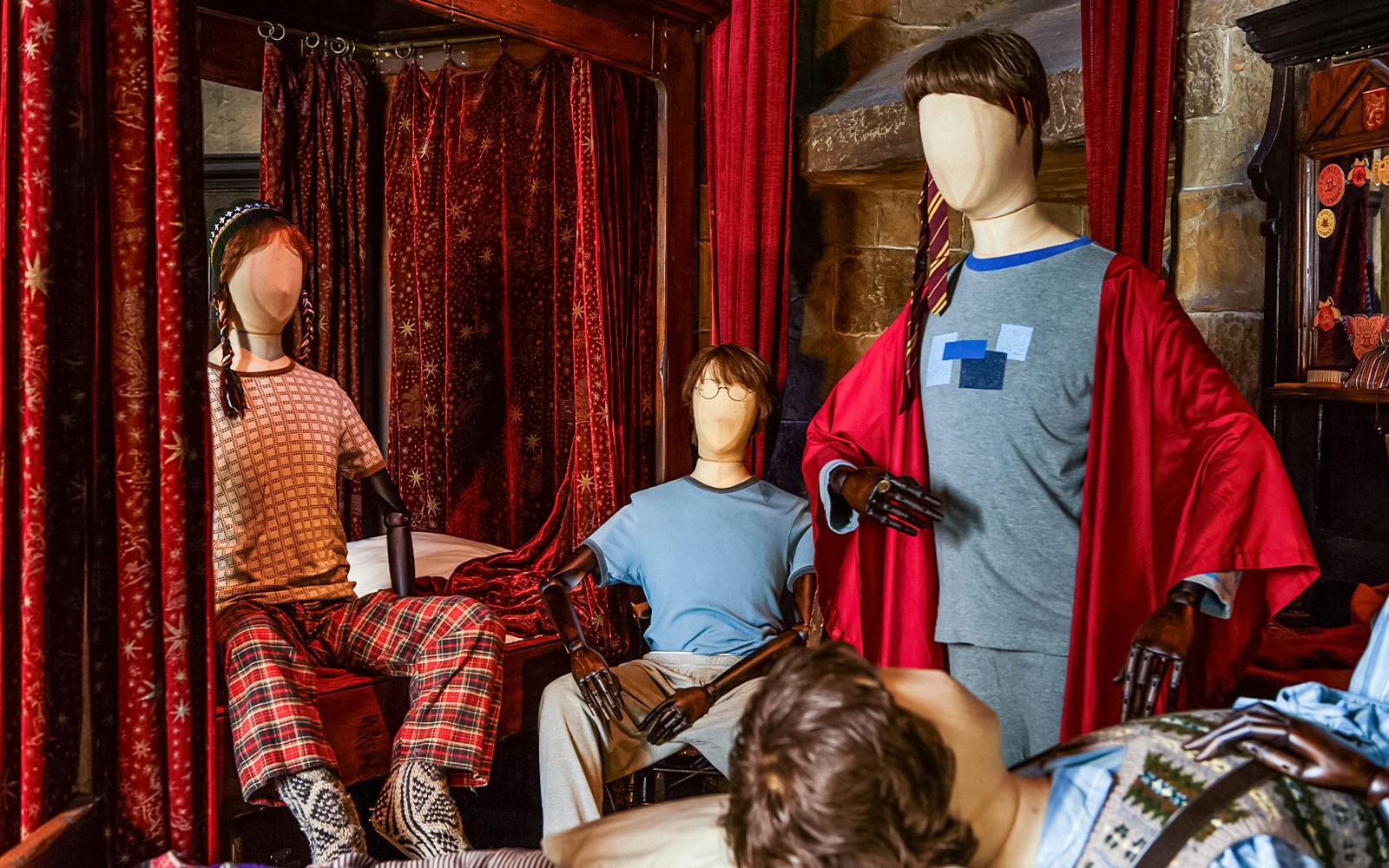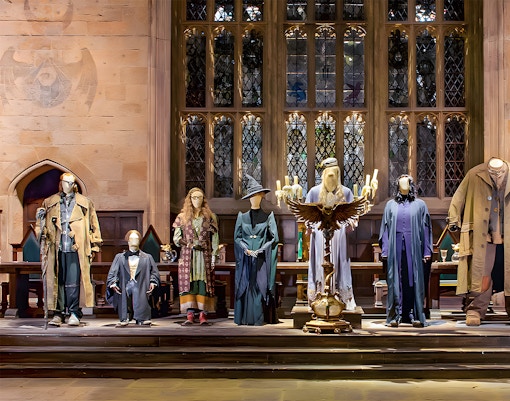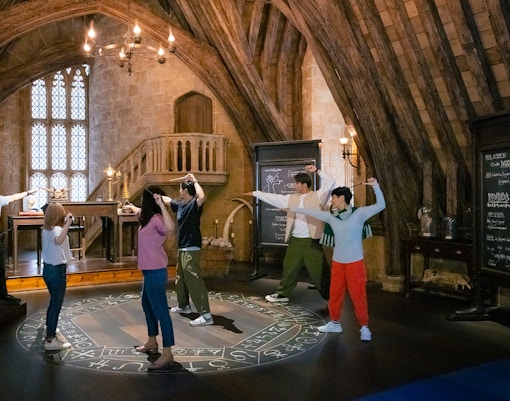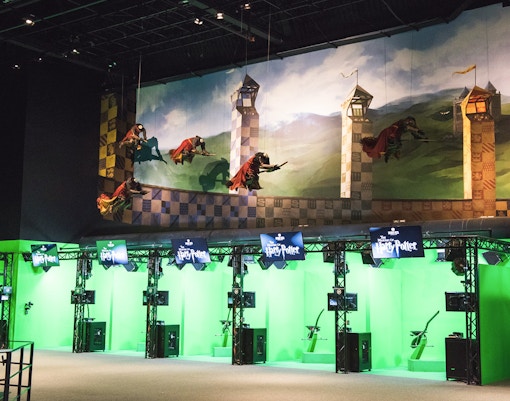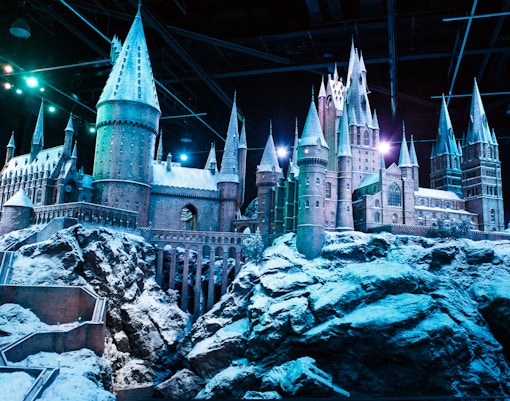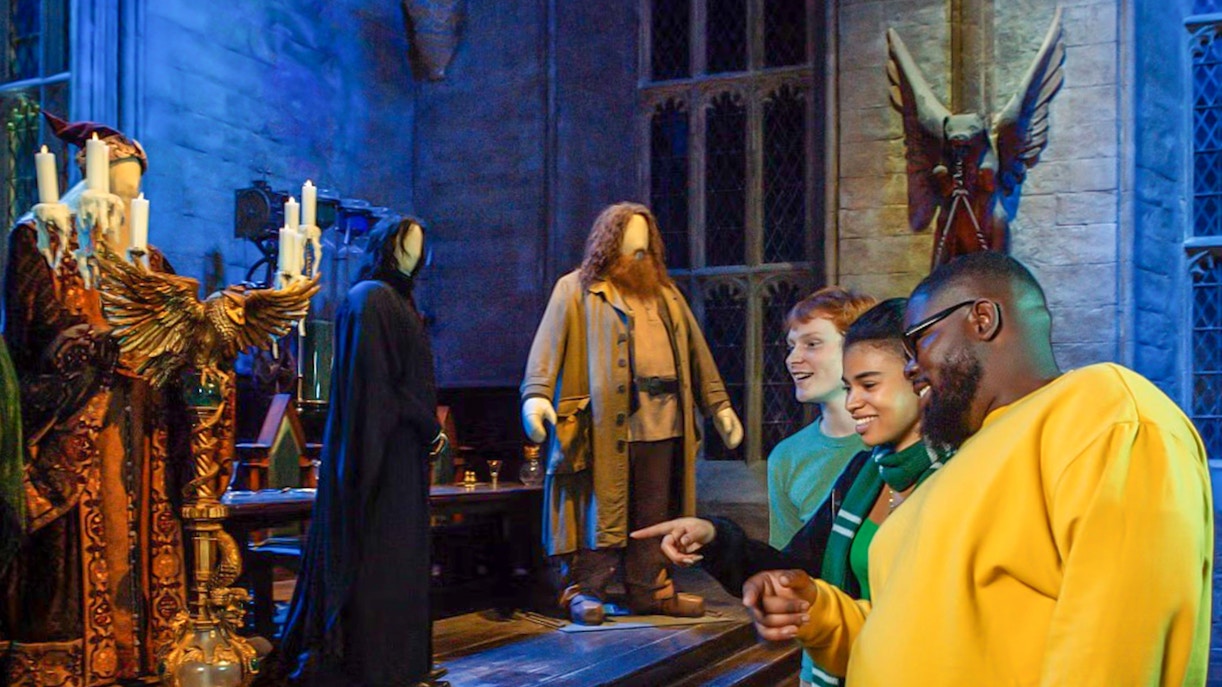Controlled fire was used in key scenes like Dumbledore’s duel or the Goblet of Fire selection. Special rigs released safe bursts on cue, monitored by fire safety teams while filming.
Iconic effects you’ll see on the tour
Invisibility cloak display
The cloak used in scenes was backedby green screen effects and clever fabric layering. At the studio, visitors can try on a version of it in front of a green screen to see how disappearing scenes were filmed in real time.
Floating feather spell
The famous Wingardium Leviosa moment used hidden rigs and controlled wires to lift a feather midair. The studio often showcases how these effects worked, although the original rig may be substituted with a detailed replica.
Self-stirring cauldrons
In Snape’s dungeon, cauldrons bubble and stir without touch. Each one was fitted with internal motors and heat-safe tubing to simulate potion-making during the shoot. You can see them in motion on the tour.
Exploding letters at Privet Drive
Dozens of letters burst from a fireplace in the first film. This was created using pressurised air and pre-cut envelopes. The set at the Studio shows how the system worked without harming the surrounding props.
Broomstick flying rigs
To make characters fly, broomsticks were mounted on motion-controlled rigs and surrounded by wind fans. You can view the broom rigs used for scenes like Harry’s first flying lesson.
Quidditch bludger practice
The self-aiming Bludger used in Quidditch was a practical prop operated with remote control and a track. A part of the rig is displayed with a monitor showing test footage.
